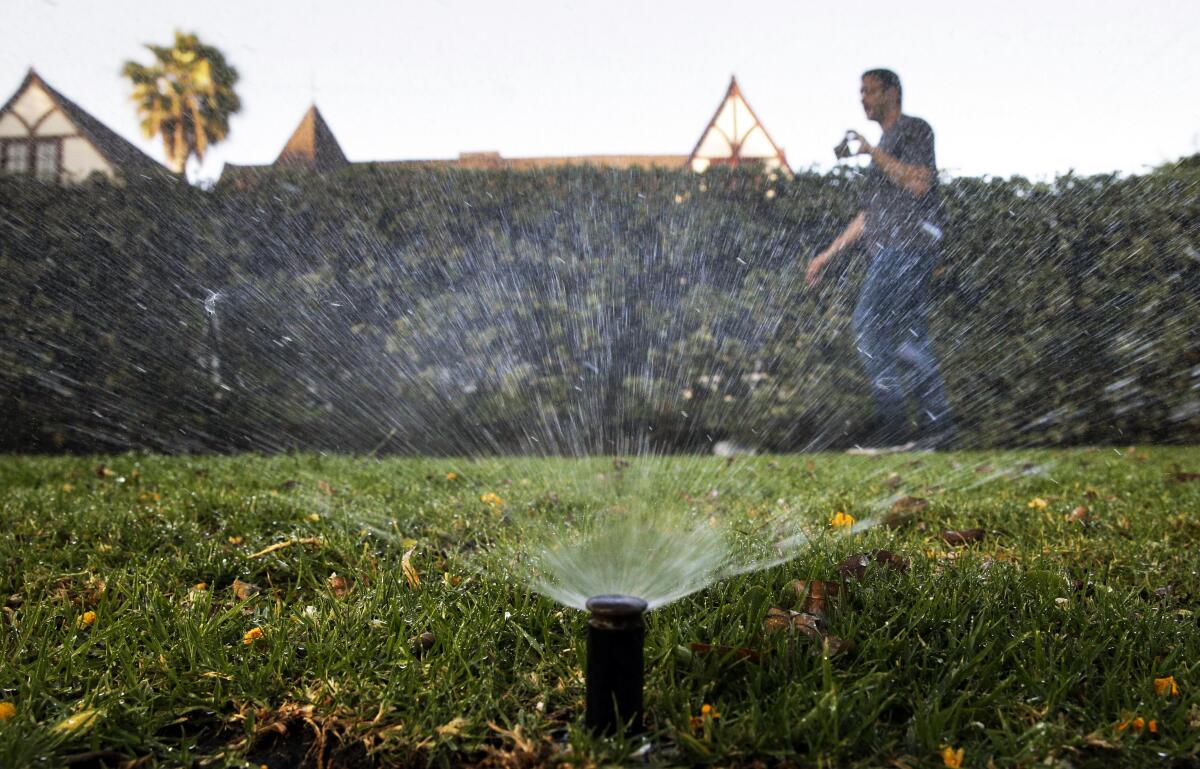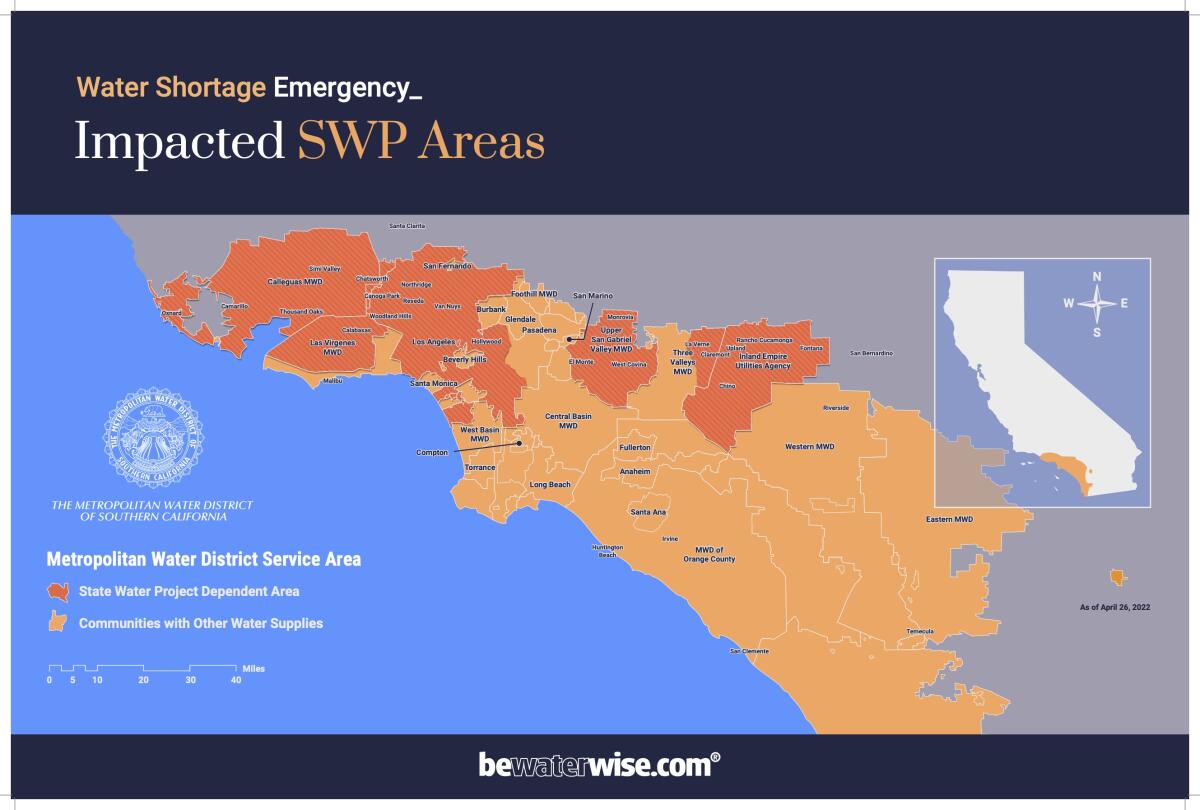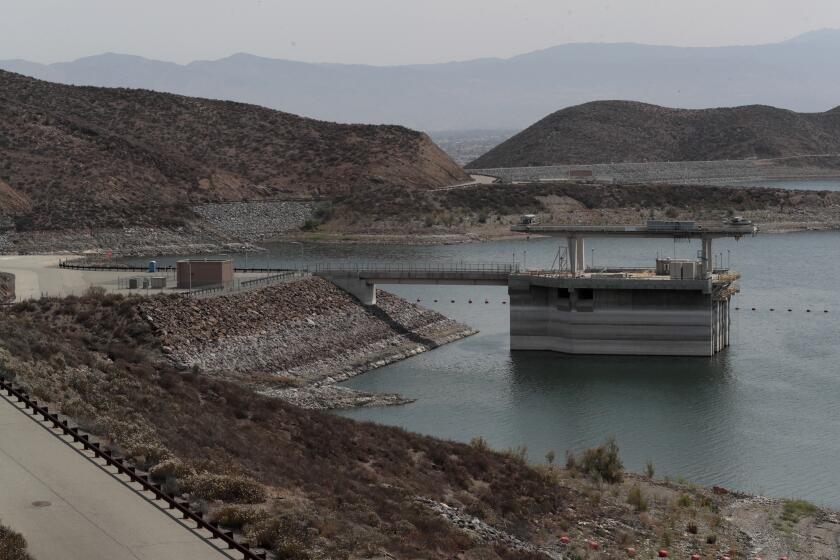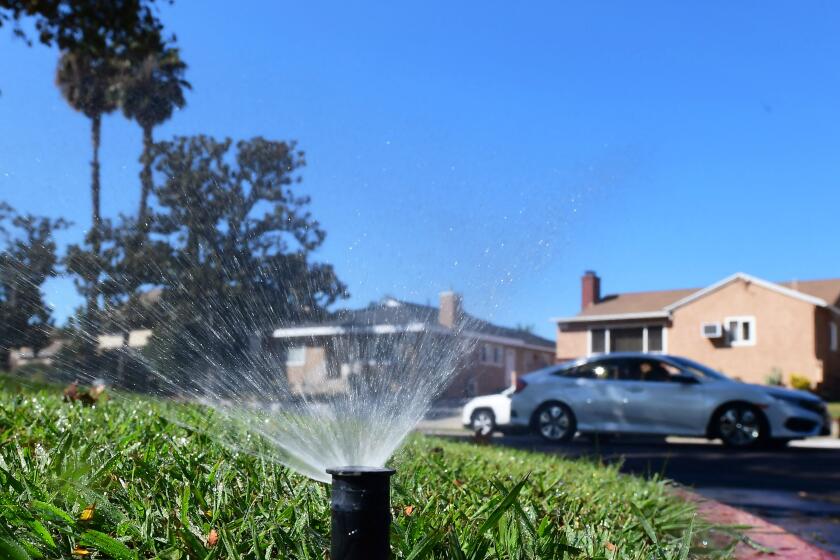Parts of Southern California don’t have enough water to meet demand, sparking sweeping cuts

The unprecedented water restrictions imposed on parts of Southern California this week have put a spotlight on how rapidly the state’s water supply is being reduced by drought and climate change.
An order to limit outdoor watering to only one day a week will take effect June 1 in areas that depend on water from the drought-ravaged State Water Project. The plan was adopted Tuesday by the Metropolitan Water District of Southern California and will affect 6 million people.
“These areas rely on extremely limited supplies from Northern California, and there is not enough supply available to meet the normal demands in these areas for the remainder of the year,” said Adel Hagekhalil, the district’s general manager.
For the first time ever, Southern California water officials will limit outdoor watering to just once a week in certain areas beginning June 1.
He and other water officials called the situation urgent.
“We are seeing conditions unlike anything we have seen before,” he said. “We need serious demand reductions.”
Where do we stand with the drought?
California’s drought, now in its third year, has become the driest on record and has been intensified by hotter temperatures unleashed by climate change. With the state’s major reservoirs at low levels, the MWD has been left without enough water in parts of Southern California.
The late-season burst of snow and moisture that blanketed Northern California in April helped make a small dent in drought conditions, experts said, but the majority of the state is still far below where it needs to be as it heads toward the hot and dry summer months. The latest U.S. Drought Monitor update, released Thursday, showed more than 95% of California in severe or extreme drought, up from about 66% three months ago. Although April storms aren’t unusual in Northern California, the dryness that preceded them this year was: The Sacramento area saw a 66-day dry spell that didn’t end until March 15 — the longest ever recorded during winter.
How much is California conserving water?
Figures released in early April by the State Water Resources Control Board showed that even during a third year of drought, Californians have been slow to step up conservation efforts. Total water usage in California cities and towns decreased by just half a percent in February compared with the same month in 2020, a far cry from Gov. Gavin Newsom’s goal of reducing urban water use by 15%.
New Southern California drought rules limit outdoor watering to once a week in some areas. Here’s what you need to know.
Newsom called on Californians to voluntary reduce their water use by that amount last July. But the state’s cumulative water savings from July through February stand at 5.8% compared with the same months in 2020. In February, the San Francisco Bay Area reduced water use by 4.6%, while the South Coast region of Southern California — which constitutes 55% of the state’s population — used just 0.2% less water. In other parts of the state, people used more water than they did in February 2020. In the Sacramento River region, water use was up 6.7%. And in the inland desert, the Colorado River region of Southern California, residents used 3.2% more water.
How much could California save?
Researchers recently calculated in a new study that the state could reduce water use by more than 30% in cities and suburbs by investing in measures to use water more efficiently. The study by the Pacific Institute, a water think tank in Oakland, also found big untapped potential for urban areas to reduce strains on overused rivers and aquifers by investing in local projects to recycle more wastewater and capture more stormwater. While the researchers determined large water savings could be achieved throughout the state, they said the biggest potential lies in Southern California for reducing water use indoors and outdoors, reusing treated wastewater and collecting more runoff when it rains.
What do we know about the new restrictions?
A large swath of Southern California will be restricted to watering outdoors just one day a week. Alternatively, local water suppliers must find other ways to cut usage and meet a new monthly allocation limit, or face fines.
Areas that depend heavily or entirely on the State Water Project include northwestern L.A. and Ventura counties, parts of the San Gabriel Valley and parts of the Inland Empire. The MWD imports water from the State Water Project and the Colorado River, serving 26 public water agencies across six counties that supply 19 million people, about half the state’s population.

The district’s staff wrote that the measures are intended to conserve water supplies and “ensure that near-term human health and safety needs can be met.”
What about trees?
There was some concern expressed in the MWD meeting about the health of trees amid restricted watering.
“I’m appalled that a change this drastic is happening in such a short period of time,” said Peter Kraut, a Calabasas City Council member. “This plan will result not just in brown grass but in killing countless trees. The damage to our environment will take decades to repair. It will cost ratepayers millions of dollars to remove the dead trees and plant new ones.”
Others echoed the concerns about trees, saying that as the water restrictions take effect it will be important for local agencies and residents to have information about how to let grass go brown while keeping trees alive.
Tracy Quinn, an MWD board member who represents Los Angeles, said she hopes the district can provide information to member agencies and customers, as Las Vegas does, “to ensure that our trees are protected.”
Times staff writer Hayley Smith contributed to this report.
More to Read
Sign up for Essential California
The most important California stories and recommendations in your inbox every morning.
You may occasionally receive promotional content from the Los Angeles Times.













